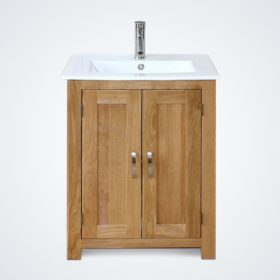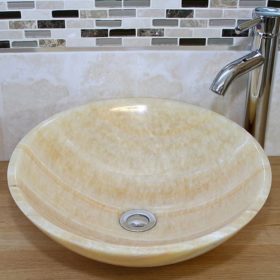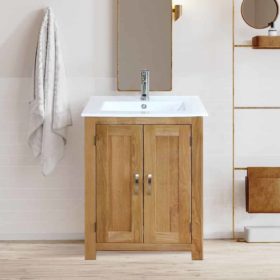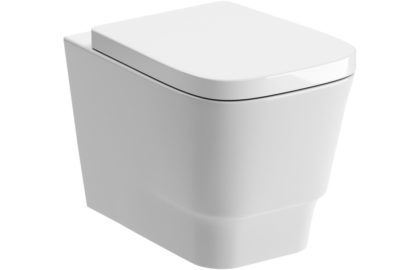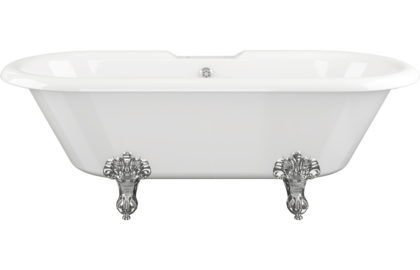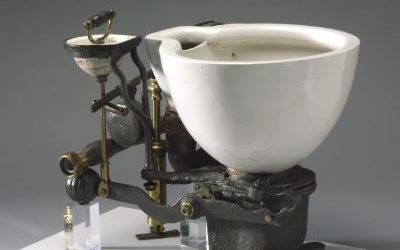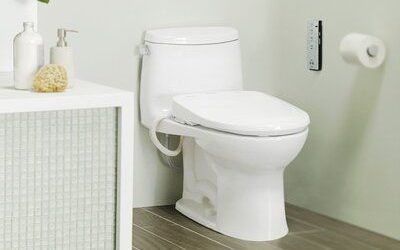A Guide to Managing Condensation in Your Bathroom
Keep Your Bathroom Mold-Free: The Ultimate Guide to Managing Condensation
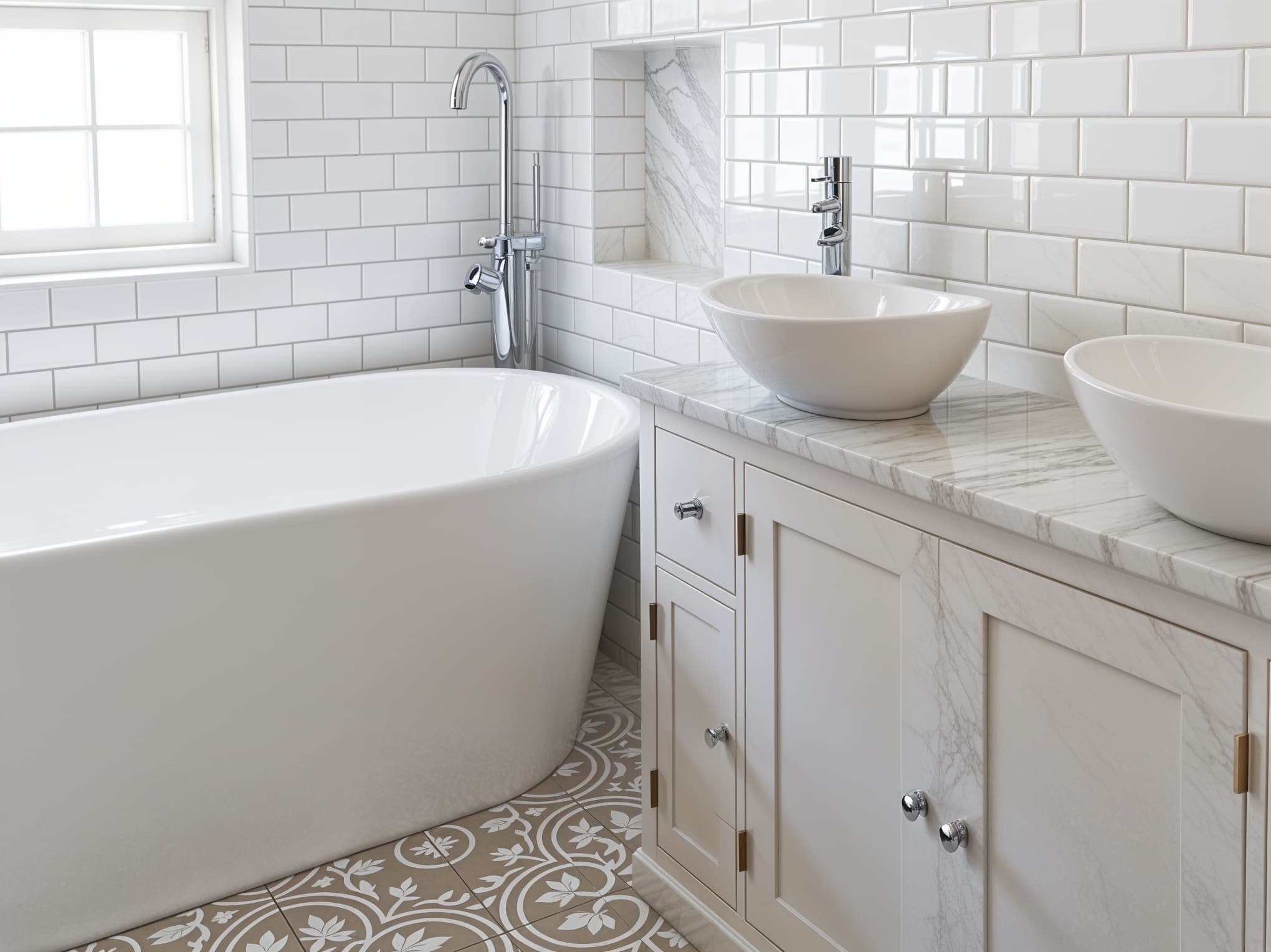
Ever noticed how a steamy hot shower transforms your bathroom into what resembles a sauna, leaving every surface kissed by droplets of water? That’s condensation in action—a natural phenomenon where warm, moisture-laden air from your relaxing showers comes into contact with the cooler glass of windows and mirrors, resulting in tiny water droplets that bead up on the surface. While it might seem harmless, this daily occurrence can be the bane of your bathroom’s existence. Excessive moisture without proper management can lead to a host of unwelcome issues like persistent mold growth, insidious water damage, and the onset of stubborn mildew. But fret not; in the battle against bathroom dampness, knowledge is your best weapon, and Bathrooms & More Store is here to arm you with the right strategies to reclaim your sanctuary from the clutches of condensation.
The Crucial Role of Adequate Ventilation in Bathrooms
A breath of fresh air is more than just a comfort in our homes; it’s a critical line of defense against condensation, especially in the bathroom. Let’s dive into why good ventilation is essential in controlling humidity levels, leaving your bathroom fresher and dryer.
Why Good Ventilation Matters
When there’s inadequate ventilation, moisture has a party in your bathroom, sticking around long enough to create a perfect playground for condensation. This can lead to all sorts of issues, diminishing your bathroom’s charm. Good ventilation whisks away the moisture, keeping those surfaces dry and denying condensation the chance to settle in.
The Relationship Between Room Ventilation and Condensation Prevention
It’s simple science, really: warm, moist air condenses on cool surfaces. Without proper ventilation, the steam from your shower turns into water droplets on walls, mirrors, and windows. This isn’t just an annoyance—it can damage your bathroom’s structure and surfaces over time. Effective room ventilation slams the brakes on this process, reducing the moisture in the air and helping to keep your bathroom in tip-top condition.
- Air Exchange: Good ventilation systems exchange damp interior air for dry outside air, maintaining a balance that’s not too moist or too dry. According to the U.S. Environmental Protection Agency (EPA), proper ventilation is key in preventing indoor mold growth.
- Preventing Mold: By controlling moisture, you can prevent mold and mildew growth, which are not only unsightly but also health hazards. The Centers for Disease Control and Prevention (CDC) notes that controlling moisture is the most crucial factor in preventing mold.
- Protecting Structures: Keeping condensation in check protects the integrity of your bathroom’s structure, including walls, ceilings, and fixtures.
Tips for Improving Air Circulation
If you’re battling bathroom condensation, fear not! Improving air circulation is a simple yet effective weapon in your arsenal. Check out these straightforward strategies to keep your bathroom fresh and moisture-free.
The Power Duo: Exhaust Fans & Dehumidifiers in the Battle Against Bathroom Condensation
Managing condensation in your bathroom not only maintains the integrity of your fixtures and fittings but also ensures a comfortable and healthier environment. Two effective allies in this battle are exhaust fans and dehumidifiers, each playing a unique role in keeping the air fresh and dry.
Clear the Air with Exhaust Fans
Ever notice how your bathroom mirror fogs up after a hot shower? That’s condensation at work, and if it’s left unchecked, it can lead to bigger issues like mold and mildew. This is where an exhaust fan becomes your new best friend. By efficiently removing moist air from the room, it prevents dampness from settling on your walls and surfaces. Just flip it on during your shower and for a little while after, and you’ll notice a significant reduction in moisture accumulation.
According to the Home Ventilating Institute (HVI), running an exhaust fan during and after a shower can reduce humidity levels by up to 80%.
Bathrooms & More Store offers a range of high-quality exhaust fans to help you tackle condensation effectively.
Stay Dry with Dehumidifiers
While exhaust fans are great at tackling condensation head-on, dehumidifiers take a broader approach. They work silently in the background, maintaining an ideal humidity level in your bathroom. Whether it’s after a steamy shower or during those soggy, rainy days, a dehumidifier can be especially handy when natural ventilation isn’t enough to keep the moist air at bay.
- A dehumidifier works by extracting water from the air, effectively lowering humidity and making the environment less conducive to mold and mildew growth. According to Energy Star, dehumidifiers can remove up to 70 pints of water per day from the air.
- Not only do these devices help prevent condensation, but they also improve air quality by reducing allergens in the air.
- Using a dehumidifier can also have added benefits for your health, particularly if you’re sensitive to respiratory issues exacerbated by damp environments. The American Lung Association states that reducing indoor humidity can help alleviate asthma and allergy symptoms.
Bathrooms & More Store provides a selection of efficient dehumidifiers to ensure your bathroom remains fresh and moisture-free.
Daily Habits to Reduce Moisture
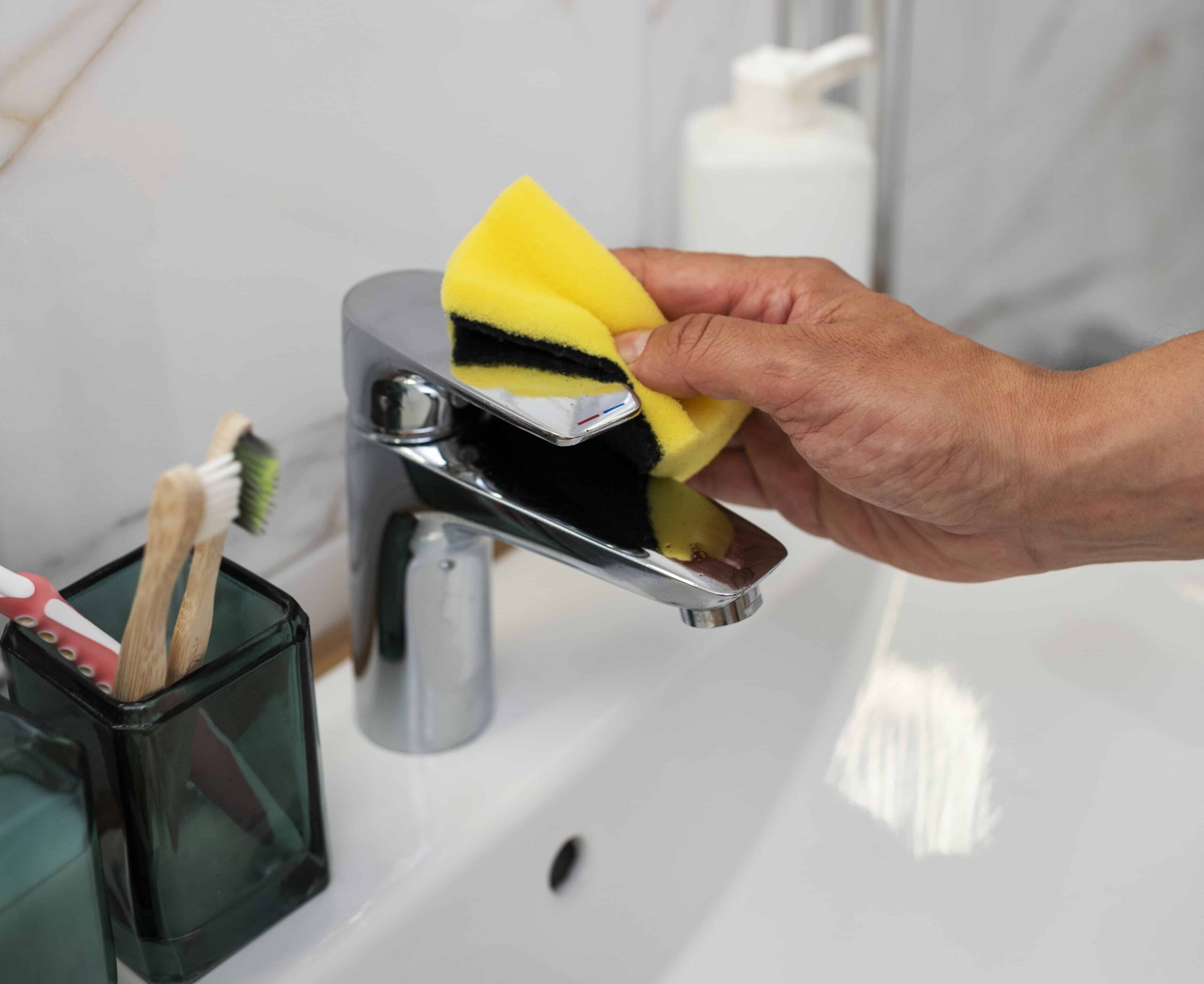
Maintaining a moisture-free bathroom doesn’t just depend on the right equipment and construction; it also hinges on our everyday actions. Minor changes in your daily routine can make a big difference in managing condensation in your bathroom. Let’s dive into some simple practices you can start today!
- Choose Cooler Water Temperatures: While a steaming hot shower can be relaxing, it also contributes significantly to the moisture level in your bathroom. Using cooler water reduces the steam produced and, consequently, the condensation.
- Keep Showers Brief: Limiting your time in the shower serves a dual purpose: it conserves water and reduces the amount of moisture released into the air. Try to make your showers efficient and concise. According to the Environmental Protection Agency (EPA), reducing shower time by just one minute can save up to 2.5 gallons of water.
- Wipe Down Wet Surfaces: Right after your shower, take a moment to wipe down the surfaces, such as mirrors and walls. This simple act helps remove moisture that can condense and linger, which over time, contributes to mold growth and excess humidity.
By incorporating these habits into your daily routine, you’ll help to keep your bathroom drier and steam-free. Stay tuned for more tips on keeping a fresh and pleasant bathroom environment, without the unwanted hassle of condensation!
Choosing the Right Paint and Materials for Your Bathroom
When it’s time to battle condensation in your bathroom, the fight extends to the very surfaces of your walls and the materials you choose to bring into this moisture-prone room. Let’s dive into how selecting the right paint and materials can make a big difference in managing condensation and creating a healthier bathroom environment.
Selecting Mold-Resistant Paint
First things first: paint. Not all paint is created equal, especially when it comes to areas that are likely to get steamy. What you need is a mold-resistant paint that’s specifically designed for high-moisture areas like bathrooms. These paints are formulated with anti-microbial properties to prevent mold growth, giving you one less thing to worry about after a hot shower.
According to Consumer Reports, mold-resistant paint can significantly reduce the likelihood of mold and mildew forming on bathroom walls.
The Benefits of Moisture-Resistant Materials
But it’s not just about the paint. The materials you choose for your bathroom accessories, such as curtains, rugs, and towels, can also play a pivotal role in managing moisture. Here’s the scoop:
- Curtains: Select moisture-resistant materials that don’t hold onto water, promoting quicker drying and limiting the potential for mold growth.
- Rugs: Look for rugs designed for bathroom use that are quick-drying and non-absorbent. This way, they don’t become saturated and start smelling musty. The Mayo Clinic recommends quick-drying materials to prevent mold and mildew.
- Towels: Opt for towels that have a blend of moisture-wicking fibers. These will not only absorb water better but also dry out faster between uses.
Bathrooms & More Store offers a wide range of moisture-resistant materials and accessories to help you create a healthier bathroom environment.
Shower
One of the main sources of condensation in the bathroom is from taking hot showers. The steam from the hot water can quickly turn into water droplets on the walls, ceiling, and mirror, leading to excess moisture in the air.
To help manage condensation from showers, consider using a vent fan to help remove steam from the room. Make sure to run the fan during and after taking a shower to help reduce moisture buildup. Additionally, wiping down the walls and shower door after each shower can also help prevent condensation.
Another tip is to keep the bathroom door closed while showering to prevent steam from escaping into other parts of the house. By being proactive in managing condensation from showers, you can help prevent mold and mildew growth in your bathroom.
Bathrooms & More Store provides high-quality vent fans and moisture-resistant shower accessories to help you manage condensation effectively.
Mirror
One of the common areas where condensation can often be found in a bathroom is on the mirror. The steam from hot showers can quickly accumulate on the surface of the mirror, making it difficult to see your reflection.
To help manage condensation on your mirror, consider installing a small portable fan in your bathroom to help circulate the air and reduce the amount of moisture in the room. You can also wipe down the mirror with a dry cloth after your shower to help prevent condensation from building up.
- Install a small portable fan in your bathroom.
- Wipe down the mirror with a dry cloth after showers.
By taking these simple steps, you can help prevent condensation from accumulating on your bathroom mirror and keep your bathroom looking clean and clear.
Bathrooms & More Store offers a wide selection of bathroom mirrors to help you create a healthier bathroom environment.
Keep Your Bathroom Sparkling: Embrace Regular Cleaning and Maintenance
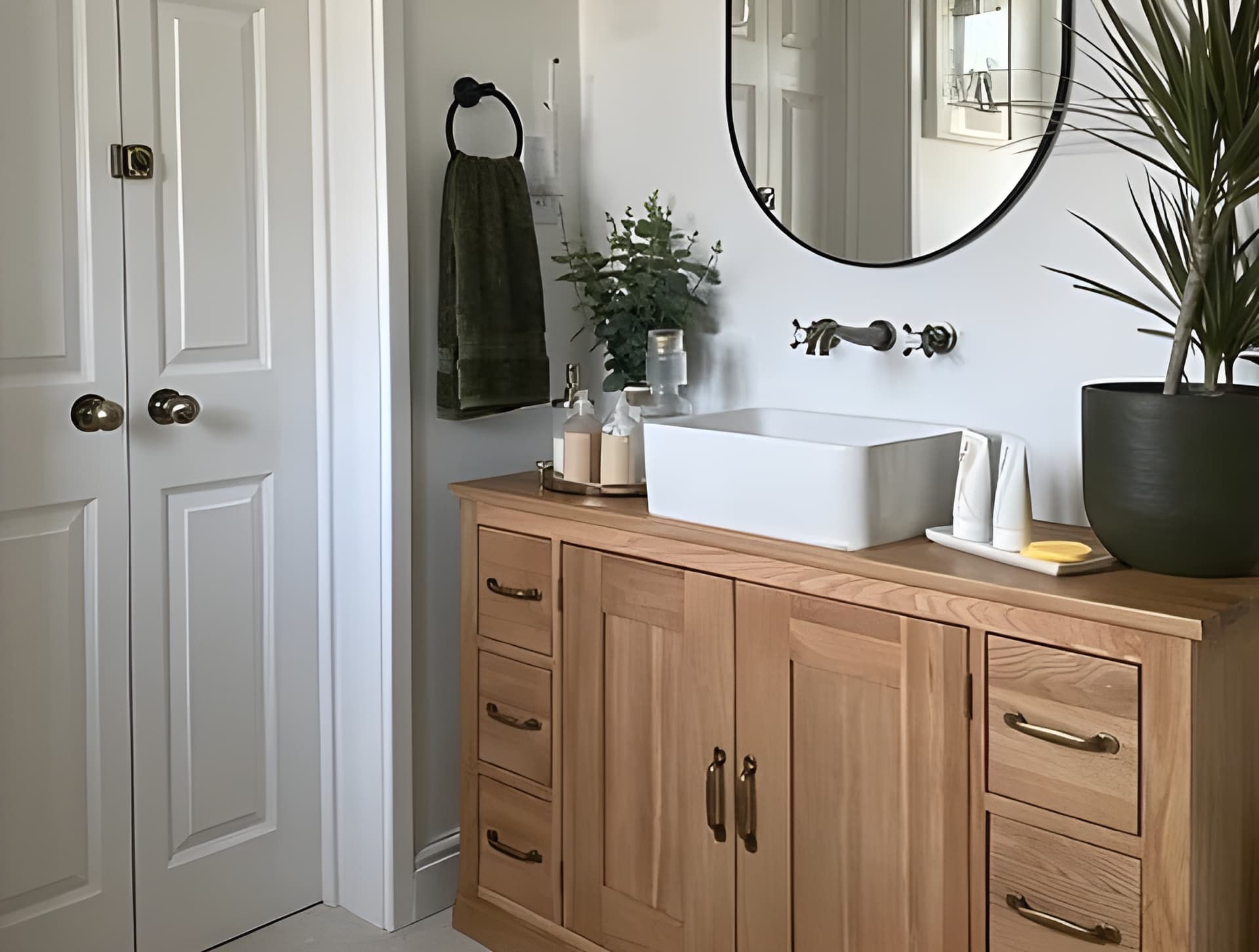
Want to keep condensation at bay? A rigorous cleaning routine is more powerful than you think! A clean bathroom isn’t just about appearances—it’s vital for managing moisture levels and ensuring your well-being. Let’s dive into the simple yet effective steps you can incorporate into your daily and weekly routines to prevent pesky condensation from taking over.
Daily and Weekly Cleaning Tasks:
- Daily Wipe-down: After every shower, grab a squeegee or towel and wipe down the tiles and shower doors. It only takes a minute but goes a long way in reducing moisture.
- Weekly Scrubbing: Give your bathroom a thorough clean once a week. Focus on surfaces where moisture and soap scum accumulate. Don’t forget the shower curtains too!
- Spot Check: Keep an eye out for water spots or mold creeping into corners. A quick clean now saves a hefty scrub later!
- Freshen Up Fabrics: Regularly launder any bathroom mats or fabric shower curtains to avoid mold and damp odors taking hold.
Quarterly Maintenance Checklist:
Maintaining your bathroom fixtures and ventilation systems is critical in the fight against condensation. Here’s a simple quarterly checklist:
- Inspect Ventilation: Check your exhaust fan for dust and ensure it’s working correctly. A clean fan is a happy fan!
- Seal the Deal: Examine the seals around your bathroom fixtures. If you spot any damage, it’s time for a touch-up.
- Drain Detective: Clear out any buildup in drains. A smooth flow prevents standing water that contributes to humidity levels.
- Grout and Caulk Assessment: Look over your grout and caulk lines for cracks or mold. A small fix can make a huge difference.
Bathrooms & More Store offers a wide range of cleaning and maintenance products to help you keep your bathroom sparkling and condensation-free.
Consistent cleaning and maintenance are your best defense against condensation-related issues. Embrace these routines, and you’ll notice your bathroom feeling fresher and looking sharper. Plus, you’re saving yourself from future headaches and costly repairs. A clean bathroom is your partner in creating a healthy, happy home!
Conquer Bathroom Condensation Once and For All!
As we’ve explored the steamy world of managing condensation in your bathroom, it’s clear that this is more than a mere annoyance—it’s about safeguarding the health of your living space. From ensuring adequate ventilation to embracing daily moisture-reducing habits, every step is a building block towards a clearer, fresher bathroom atmosphere.
Remember, the fight against condensation is a combination of smart home improvements—like insulating your walls and windows, using the right paint, and installing exhaust fans—and simple everyday actions, such as wiping down surfaces and keeping a regular cleaning routine. Together, these practices not only ward off condensation but also protect against mold and mildew, contributing to a healthier home environment.
And let’s not forget the mighty role of anti-condensation products. From dehumidifiers to anti-mold sprays, these tools are your allies in keeping moisture at bay. By integrating our recommendations into your daily routine, you can look forward to a bathroom that’s both comfortable and resilient against the troubles of excess water vapor.
Bathrooms & More Store is your go-to source for all the products and advice you need to conquer bathroom condensation once and for all.
We invite you to join the conversation and share your own strategies for defeating bathroom dampness. What works for you? What doesn’t? Let’s pool our wisdom and tackle this misty menace together. Head over to our comments section and spill your secrets!
Are you thirsty for more insights on maintaining the perfect humidity level? Keep the learning going by checking out more of our content on achieving a balanced, happy home. Your bathroom is just the beginning—let’s make your entire house a sanctuary of freshness!
- Share your tips: Dive into the discussion below.
- Read more: Explore our other resources on home humidity management.
